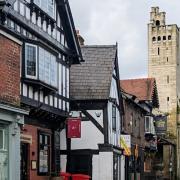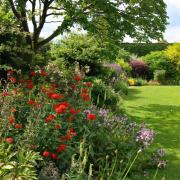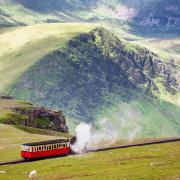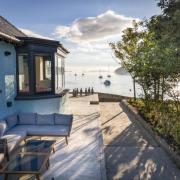Ian Brighouse, compiler of The British Beach Guide, shares some of the best in Wirral and North Wales. Rather than just picking his own favourites, he asked beach users for their highlights and drew his selections from their responses
It's a tough job but someone had to do it. Ian Brighouse has spent the past 12 years travelling the length and breadth of Britain, to find the best beaches. From the remote wilderness of Cullykhan in Aberdeenshire to the thriving working harbour at St Ives in Cornwall; from the vast lonely sands of North Norfolk to Anthony Gormley’s eerie iron men standing guard on Crosby's sands, Ian has visited more than 130 of Britain's beaches, and his quest continues.
Rather than just picking his own favourites, he has asked beach users for their highlights, and drawn his selections from their responses, using many in his guide.
'It seems people prefer unspoilt, undeveloped beaches and there’s also an important link through the generations,' says Ian.

'Regional characteristics also distinguish beaches: long granite headlands feature in Cornwall and Pembrokeshire, with the sea often viewed closely from the side, whereas big skies and migratory birds have a resonant impact in Norfolk and Suffolk.
'Society's relationship with nature is starkly visible through the string of lighthouses in Northeast Scotland, as well as such varied attractions as the picturesque golf links of Fife, the inshore fishing communities of Northeast Scotland, Suffolk, Sussex and Cornwall, and not forgetting the Cornish surfers and wild swimmers. There’s a wide diversity of beach use in these islands.'
He believes people are at their happiest on the beach and many were happy to talk. These were all strangers and the interviews were not pre-arranged, yet the answers came thick and fast. Secondly, the range of answers was as diverse as the moods of the sea.
'You just don’t know what you’ll see and who you’ll meet when you go to the beach, meaning that you’ll always have a different answer to the question: “What does the beach mean to you...?”,' he says.
Here's a guide to some of the Wirral and North Wales beaches featured in the book.

The Red Rocks, Hoylake, Wirral
'Also known as Hilbre Point, Red Rocks beach at Hoylake shares access with West Kirby beach to the Red Rocks Marsh Local Nature Reserve and its wide variety of wildlife,' says Ian. 'With views across to Hilbre Island in the Dee Estuary and a major championship golf course nearby, it attracts a variety of visitors.
'Walking is popular, along with cycling. Red Rocks has a significant natterjack toad population. This is also a great beach for exploring rock pools, but do be careful when the tide is coming in, as it rises quickly. A highlight in August is the RNLI Open Day, known as Lifeboat Day. Red Rocks hosts regular beach cleans, bathing water is up to scratch and dogs are allowed on the beach.'

Church Bay, Anglesey
'It is a short walk from the village of Rhydwyn down a steep path to a beautiful bay that harbours this fine little beach, made up of rocks, pebbles and sand,' says Ian. 'Steep cliffs behind the beach feature the Isle of Anglesey Coastal Path and there is a handy car park.
'This is a Blue Flag beach, which is cleaned regularly and therefore ideal for paddling or swimming. Sailing and fishing are also popular at Church Bay. The sunset is a highlight here, which I was lucky enough to witness during one visit. At such a time, the horizon seems far away and enticing.'

Porth Oer, Llyn Peninsula
'Located on the north coast of the Llyn peninsula, Porth Oer beach is popular with surfers and body boarders, due to the deep swells that arrive here,' Ian explains. 'Nearby Mynydd Carreg makes a fine lookout point for nature lovers. The views from the beach are outstanding and there are footpaths through the dunes to explore, enjoying the wildlife as you go. The beach is also known as Whistling Sands due to the sound made by the beach when you walk along it. With a seasonal café and a picnic site, plus nearby National Trust parking, this is a great place to explore.'

Pwllheli
'Pwllheli has two Blue Flag beaches, each with excellent bathing water quality,' says Ian. 'Being part of a Special Area of Conservation, there's the chance to see wildflowers in the dunes and dolphins out in Cardigan Bay. The shingle South Beach stretches from Gimblet Rock along the promenade towards Llanbedrog. Glan-y-Mor beach is located at the back of the marina, sandy and running for three miles to the Pen-y-Chain headland. During the summer, Pwllheli is very popular with visitors.
'The town is a magnet for shoppers and those looking for a bite to eat. Keep an eye on the tide, as the pull is strong during the middle of the tide run and can catch people out.'
The British Beach Guide by Ian Brighouse, Whittles Publishing, manonabeach.com



























